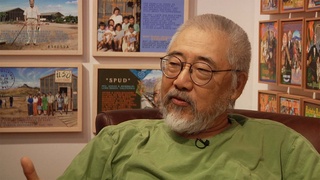Interviews
Making craft items from shells found at Tule Lake
Then it was up to whoever was gonna make the flowers or little birds or pins or earrings or whatever they're gonna make, it was up to the person to use their talent in making different things. But mostly, what was selling was the corsages. They were roughly made at first. I don't know what other people used, because I wasn't really interested in what other people was doing. I got interested in finding ways to make the shell flowers myself, and I didn't want just clumsy-looking corsages. I wanted them to look real neat, and I wanted to be sure the stems were wrapped real fine. And I had experience wrapping fishing poles, so I knew how to wrap the wires. And, of course, the wires was the screens that my dad took apart, and they were kind of crinkly and he tried to straighten 'em, but you couldn't straighten 'em very well.
But it worked out pretty good, and then people found out about my corsages, so I kept getting orders from the, mainly from the Caucasian personnel that worked in the hospital in the administration department. So I was really busy; I got so involved that I'd wake up in the middle of the night and draw a sketch and then make it the next day. And I sold a lot of 'em and had orders when I got transferred to Idaho.
Date: September 15-17, 2004
Location: Washington, US
Interviewer: Alice Ito
Contributed by: Denshō: The Japanese American Legacy Project.




